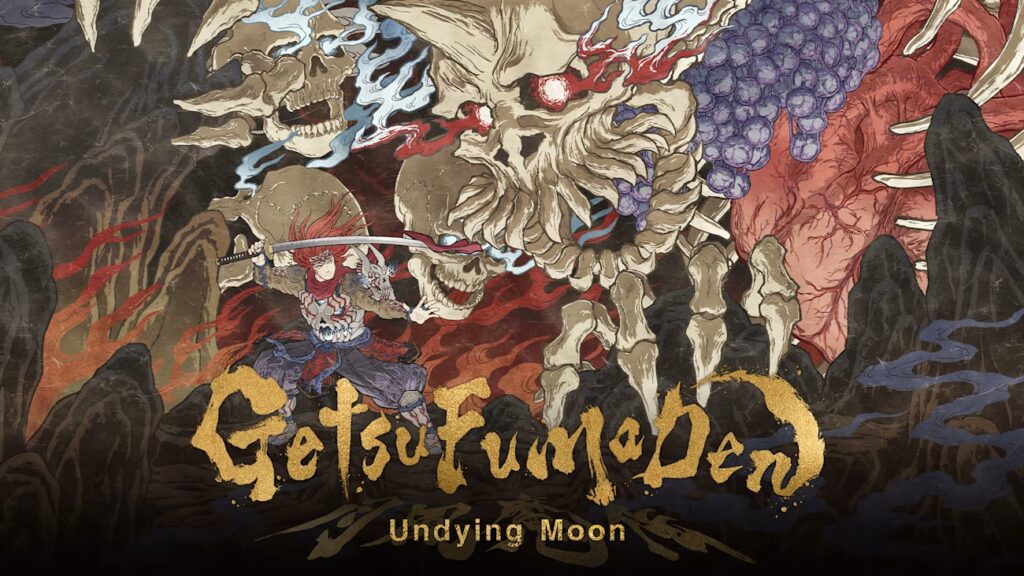
If the title of GetsuFuMaden: Undying Moon is a bit hard to pronounce, don’t sweat it. This is one of Konami’s most obscure vintage IPs and only the hardest of the hardcore gamers were previously aware of its existence! Originally released in 1987 on the original Famicom, GetsuFuMaden (with many spelling mistakes by English-speaking otaku) developed something of a cult following. The game was never wildly successful, but it had an impact and no one forgot about it, not even Konami. Over the years, Fuma (the main character) has shown up over and over in Konami games, perhaps most notably as DLC in Castlevania: Harmony of Despair on PS3 and 360.
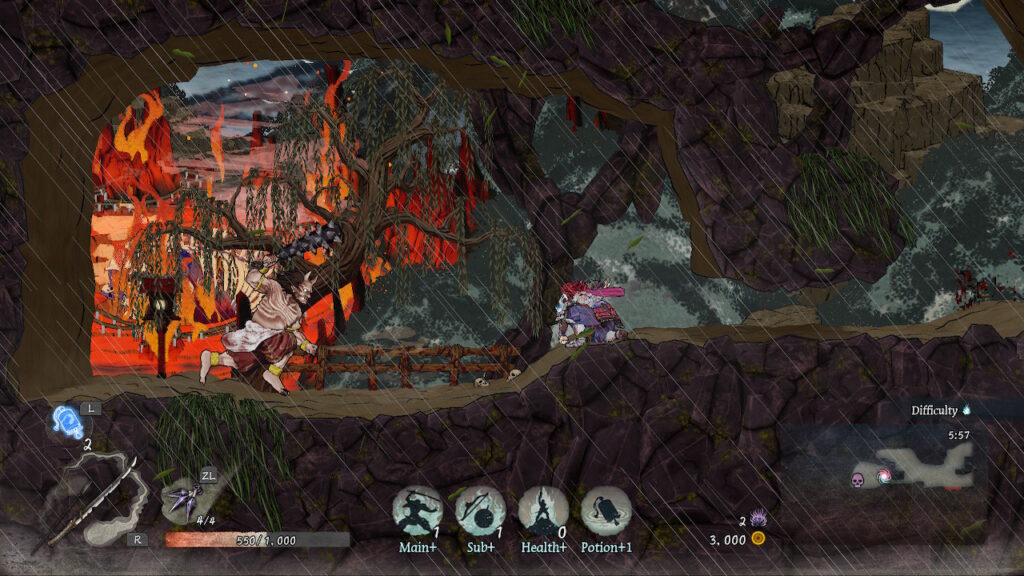
Thankfully, after 35 years, Konami has seen fit to finally return to Fuma’s world with GetsuFuMaden: Undying Moon on the Nintendo Switch! In GetsuFuMaden, you control the descendent of the original Fuma while he searches for his missing brother and fights back the minions of hell as they threaten to overtake the earth! GetsuFuMaden is thin on overall plot, but this is almost entirely an action game, so that’s perfectly fine.
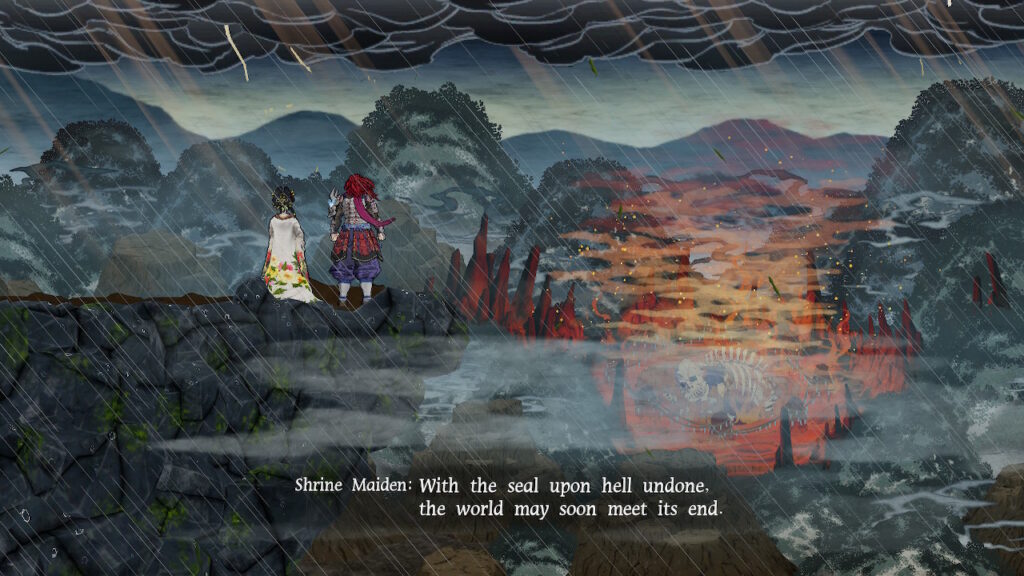
As you begin to play GetsuFuMaden, you’ll immediately find that the game is surprisingly intimidating. It’s not just you. There’s a lot going on here and the mechanics of gameplay are pretty hard to follow. Konami made a rather complex game out of the relatively simplistic gameplay of the original Famicom game and jumping in won’t get you much of anywhere. You’ll have no choice though, because the only way to really get a feel for the mechanics of GetsuFuMaden is to play it. In redesigning the game for the modern era, Konami has turned it into a roguelike with a gameplay loop similar to Dead Cells. However, unlike Dead Cells, much of the intuitive nature of the game is missing, leaving players to ‘find their way’ so to speak.
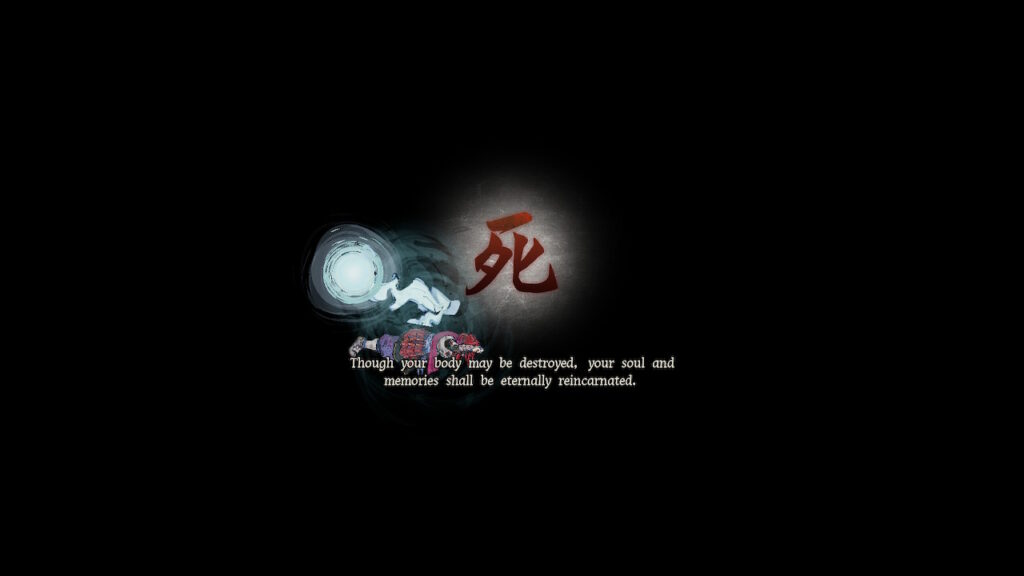
None of this is immediately apparent when you start playing however. After the introductory story, you’re thrown into Fuma’s village and pick up some weapons, and then it’s off to the first stage. However, you won’t be thinking about gameplay much at first because you’ll be too busy looking around. GetsuFuMaden: Undying Moon is absolutely, astonishingly gorgeous and your first time playing, there’s so much going on that it’s hard to even focus. From the driving rain in the foreground to the massive flaming demon army moving in the background, it’s hard to even narrow your view to enemies. This is easily the most beautiful game released in years and is patterned heavily after traditional Japanese artwork. The only game that looks even close is Okami, and that fantastic game from Clover still has an impact on gamers to this day.
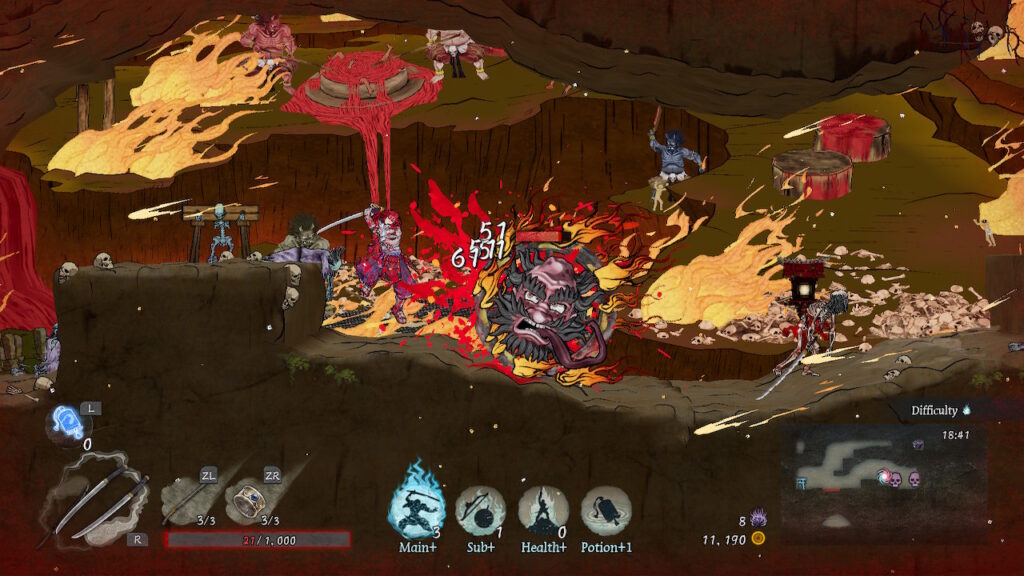
Once you adapt to the overwhelming visuals, it’s time to figure out what to do in GetsuFuMaden and it’s pretty straightforward, at least at first. Kill the enemies, dodge their attacks. If you attack at the same time, you counter them, and if you rack up enough counters you end up becoming demonized, absorbing their essence and increasing your combat strength for a short time. Each level of demonization makes you more powerful, burning with an eerie blue flame. Occasionally, enemies will also drop souls which you can devour. These blue souls can be consumed to strengthen your character, upping the power of your main weapons and sub-weapons and even increasing your life. Pro-tip: Up your health first. Each soul you collect advances the Soul Devour counter one space, much like the powerups on Konami’s Gradius. If you wait until the third soul, you can boost your health dramatically, and with 3 or more boosts (9 souls or more) you’ve got over 3000 hit points, making life a whole lot easier for Fuma.
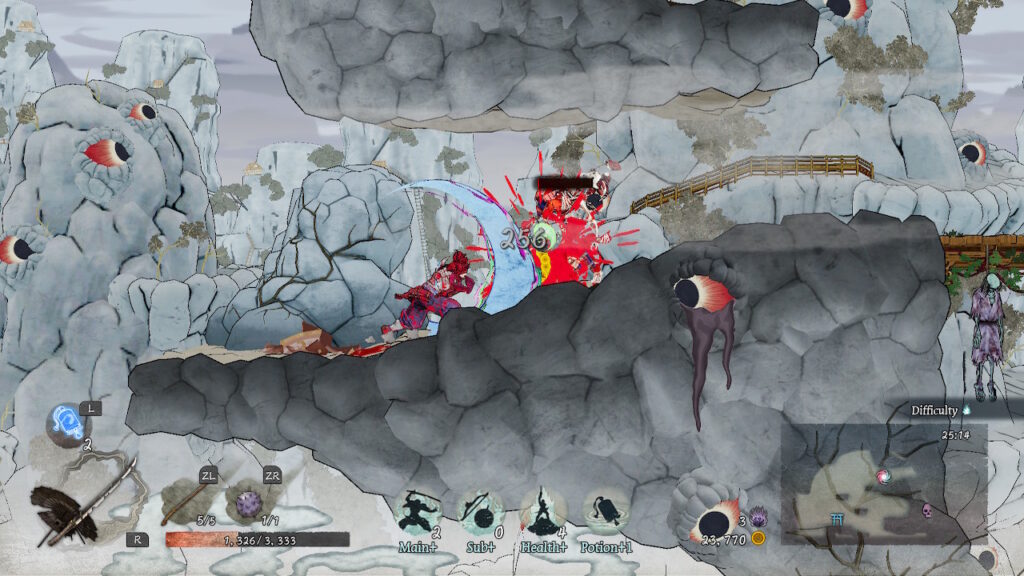
There are a lot of little tips like this in GetsuFuMaden. Once you’ve put about an hour in, have no idea what everything does, and are generally confused, it’s time to go through the tutorial in the menu screen. Doing it at first is overwhelming and more than a bit confusing but once you have a reference point, it’s important to go back and review the flow of the game. The game does an absolutely horrific job of explaining, well, everything, so be prepared. You’ll find that virtually everything can be upgraded, but it’s more of a battle to upgrade than it is to fight demons! After each stage, you’re returned to an area where you can permanently boost your character with two types of collectibles, green and yellow. The green ones are traning and they boost things like health while the yellow are secret arts and boost abilities.
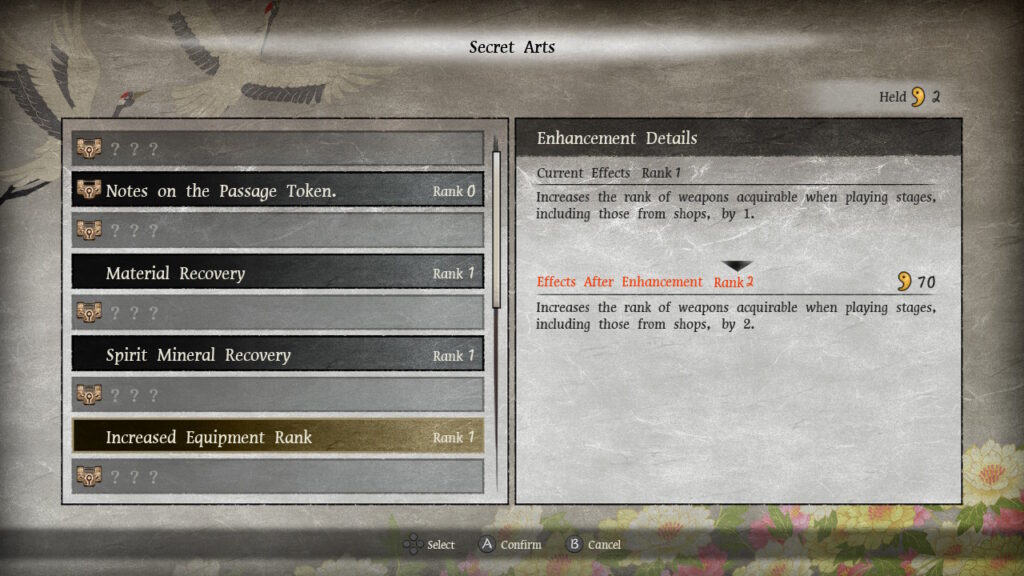
Unfortunately, you lose anything you haven’t banked if you die. Early on, the chances of survival are low and you’ll lose a lot of stuff. Every death loses you, well, everything at first. Beat the first level and you can choose to go back to the Getsu family estate, losing all your weapons and upgrades, but retaining your items including yellow and green upgrade materials. If you want to progress in GetsuFuMaden, it is utterly imperative that you do this. Several times through the first and hopefully second level and you’ll end up with some upgrade materials. Boosting your starting health, activating the different levels of items that are randomly dropped, and modifying things like how much damage spikes do are the only way you can survive in GetsuFuMaden.
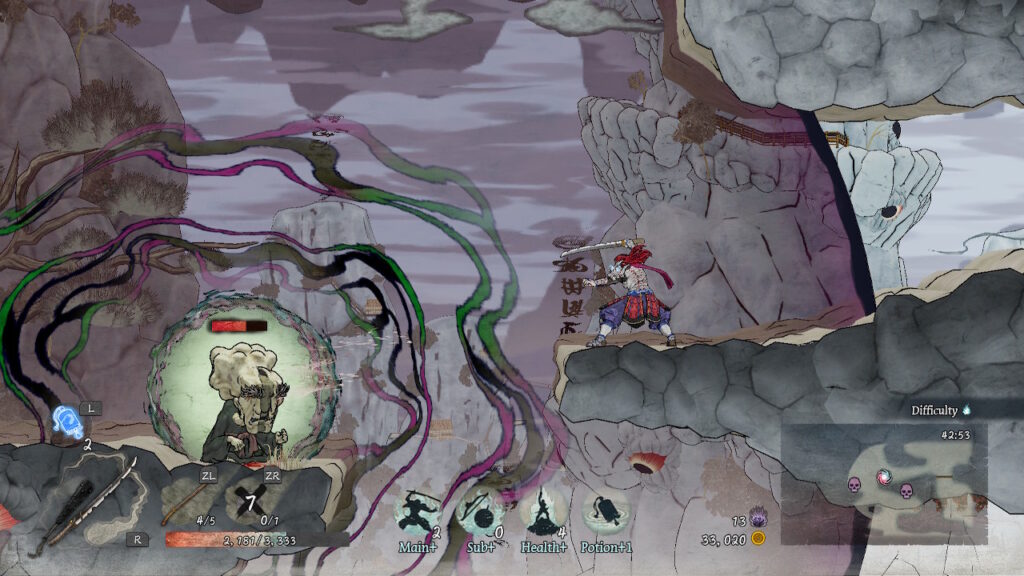
Once you start building for a while, the first couple levels will become easy to beat, but by that time you’re getting a bit bored. This is where GetsuFuMaden fails. The amount of repetition required to effectively progress in the game is huge and not nearly as fun as it could be. After 10 or more loops in the first couple of levels, the shine has worn off the graphics, the enemies hold nothing new, and the gameplay loop feels like it’s dragging a bit too much. Sure, it’s beautiful, but you’ve seen it all before and now you’re just tallying up the amount of materials to make yourself incrementally more powerful while you wait to unlock more stages by finding keys (they aren’t automatically available), try to find blueprints to unlock the huge amount of extra powerups, weapons, and status upgrades, and just generally wait about a lot. GetsuFuMaden is an absolute grind for progress and finding the exact right balance of Soul Devours, upgrades, potion use, and weapon preference is key to success. With a game that gives you no information, that’s a tall order.
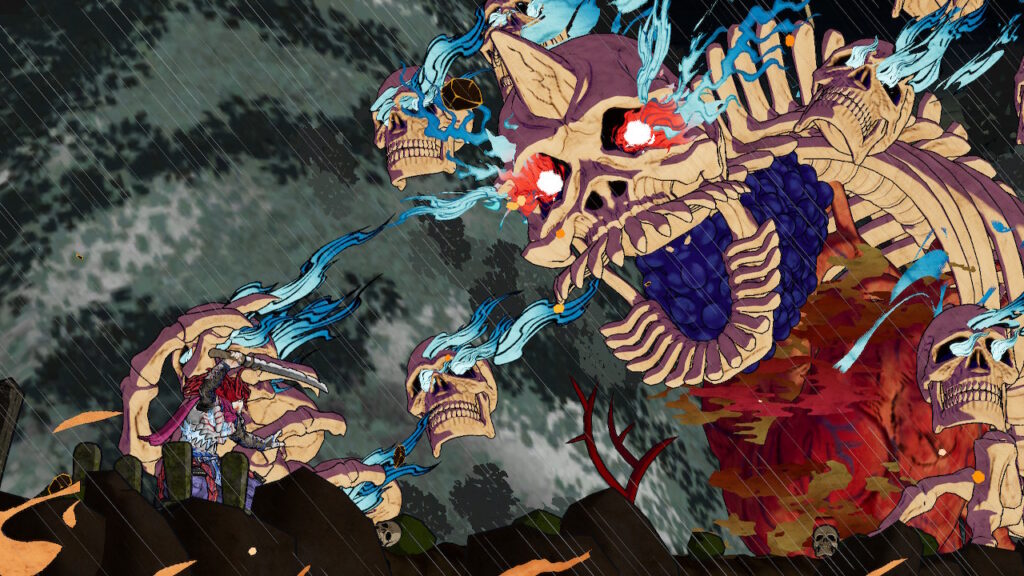
There are four initial stages to GetsuFuMaden but as you progress, more become available. The most dedicated players will eventually unlock all ten stages of the game, but it’s definitely going to take some time. Even just getting through the third level is an accomplishment as the mountain peaks are exponentially larger than the first two short stages and the snow level is just pure evil without the correct upgrades. Stage 3 for example is utterly massive, and a first playthrough of just that one stage, especially if you’re thorough, can take upwards of 30 minutes, inevitably ending with your untimely demise due to complete unfamiliarity with the boss at the end. Everything can be overcome in GetsuFuMaden, but the way in which it needs to be approached is entirely opaque, leaving players to intuit what to do next rather than being handed their walking orders and moving from obvious point to obvious point.
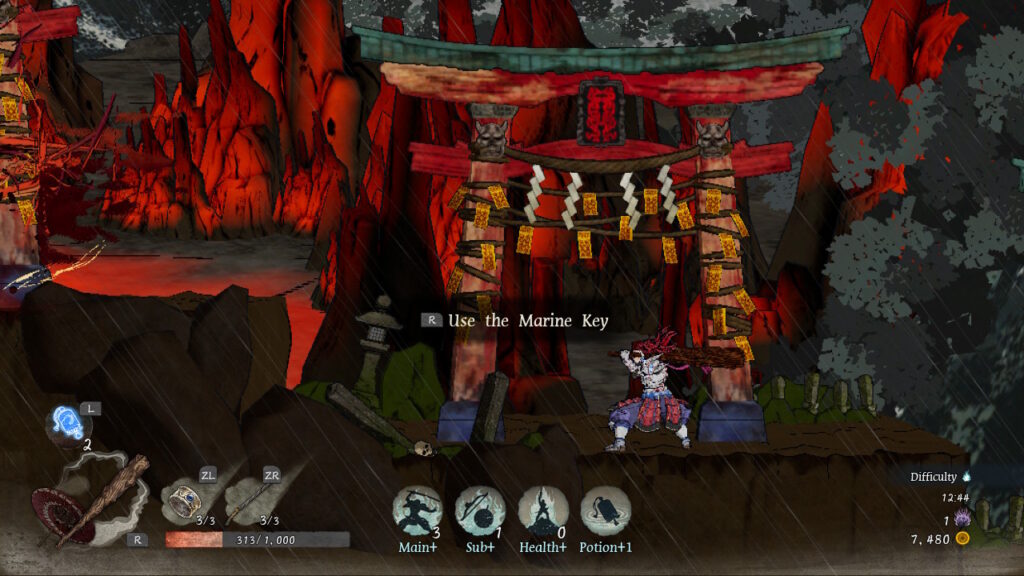
That’s part of the magic of GetsuFuMaden though. This is a game that hearkens back to the golden age of gaming where hand-holding and plot markers simply didn’t exist. There were no FAQs, no internet, and no help, and while gamers today are poorly equipped for that style of gameplay, this hardcore feel is part of both the appeal and the failing of GetsuFuMaden. Games that expect a lot from players are few and far between and to really enjoy the game, you’ll definitely have to put some work in.
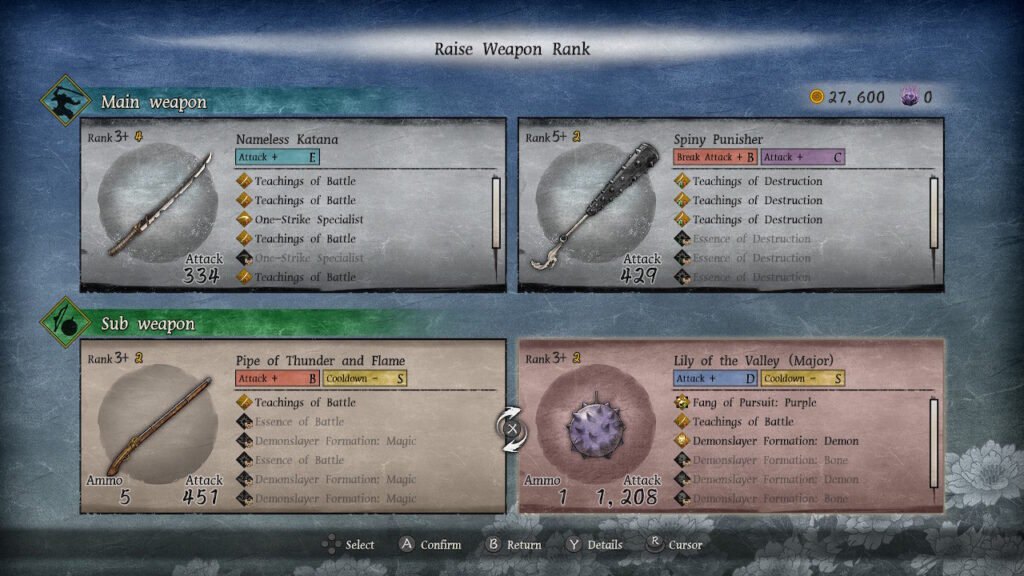
That work is worth your time though, because each stage introduces new elements, new attacks, and new expectations, pushing players to their limits. Each boss is a masterpiece of artistry, so much so that there’s a painting of each just before the combat begins. GetsuFuMaden is pure visual poetry in motion, both in the incredibly lush enemy and background designs and in the overall mechanics of the game. While you might initially think that the game is a bit unresponsive, it’s only because you haven’t adapted to the incredibly finely timed combat. Every single aspect of GetsuFuMaden is carefully timed for expert players to be able to flow through the game like a sword through water. In fact, the game itself is based on the idea of Japanese martial arts itself and that feel of constant flow when the gameplay comes together and you really start to mesh with the controls is almost a martial art in itself.
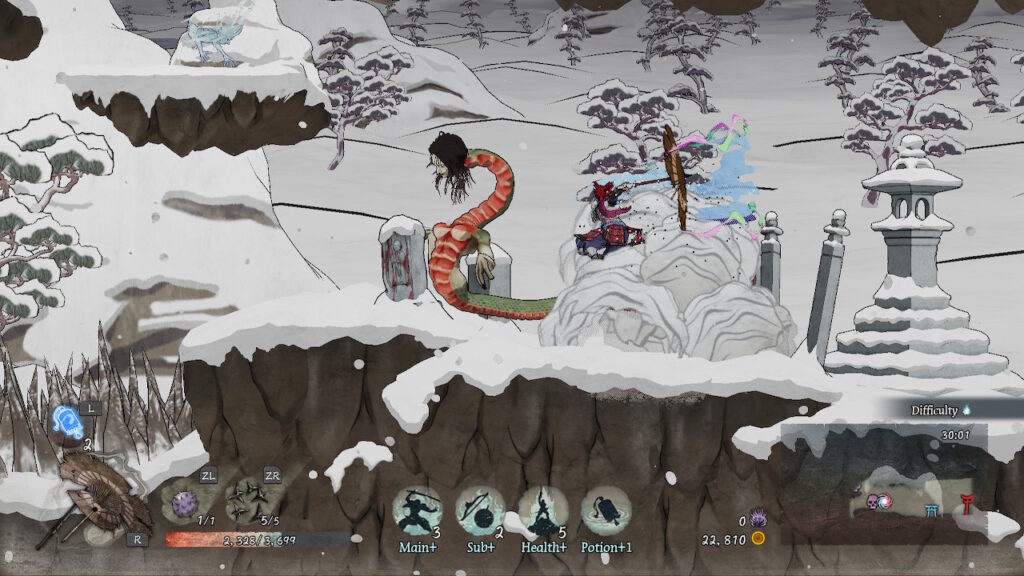
What you have to keep in mind, and it’s incredibly hard to do so, is that there is always a right and wrong way to play GetsuFuMaden: Undying Moon. If you’re just trying to beat levels, you’re doing it wrong. It won’t work. You have to sacrifice your weapons and progress repeatedly and regularly to progress further in the game, devour the right souls at the right times, and counter the right attacks in the right manner each time. This is a game of incremental progress and skill with a steep learning curve and an even steeper progress curve and it certainly won’t appeal to all gamers. Go back to the estate. Start over, beat two levels, then return to the Getsu village. Then beat three levels repeatedly before you return, and so on. Fail to do this and you fail to proceed, but be aware that this is a time consuming loop.
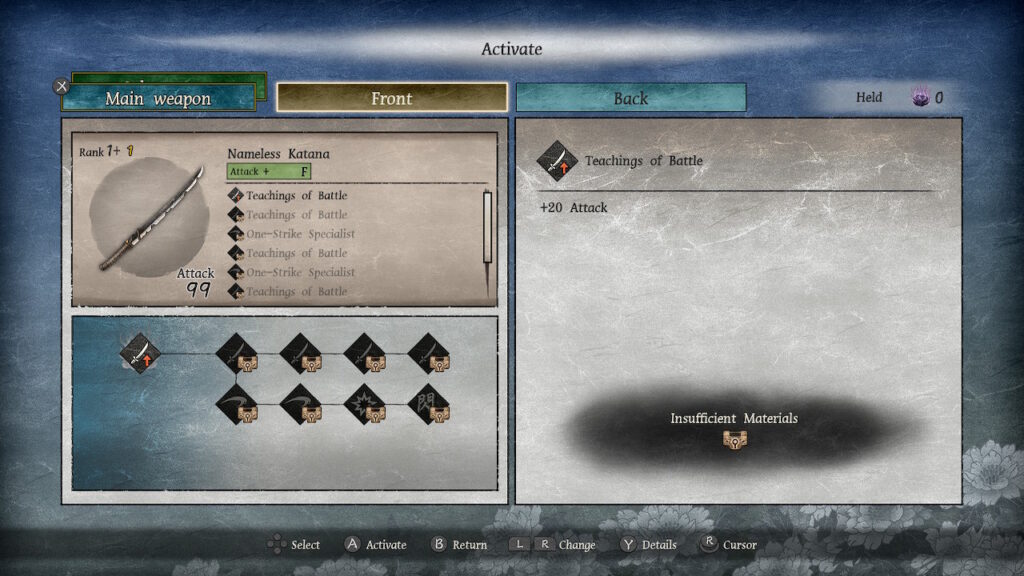
In comparison to games like Dead Cells, it feels almost plodding, but the combat refinements make it much more interesting. It should also be noted that levels are procedural in GetsuFuMaden, so even if you learn everything about how to play, you never know quite how a level will be structured on the next playthrough. The levels aren’t as complex as other roguelikes, but they’re enough to further slow the gameplay and frustrate players who are used to more frequent tangible rewards for their efforts. This only reinforces the patient and very Japanese nature of GetsuFuMaden: Undying Moon however and ultimately makes it a better game if you’re the sort of player that’s suited to it.
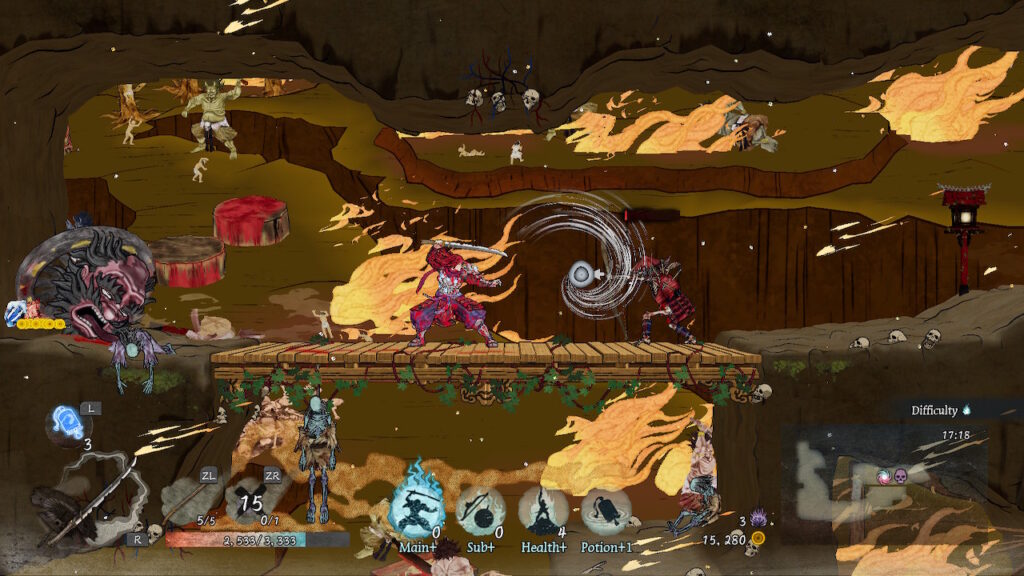
In addition to the stunning vistas of the game, the music is equally outstanding, with a traditional Japanese feel which perfectly accompanies the sound design in the game. Everything interacts perfectly, load times are fast, and the entire impact of the game is as much that of a work of art as it is a roguelike combat game. Very few titles have this much detail and it’s obvious that the team at Konami who developed GetsuFuMaden made it a labor of love and expression that is unlikely to be matched in the near future. This is art as much as it’s gaming and not only in the visuals and sound, but in the core gameplay design, combat, controls, and even hit detection. The closest parallel might be to bullet hell shmups, where core design and artistic implementation collide in the best way possible.
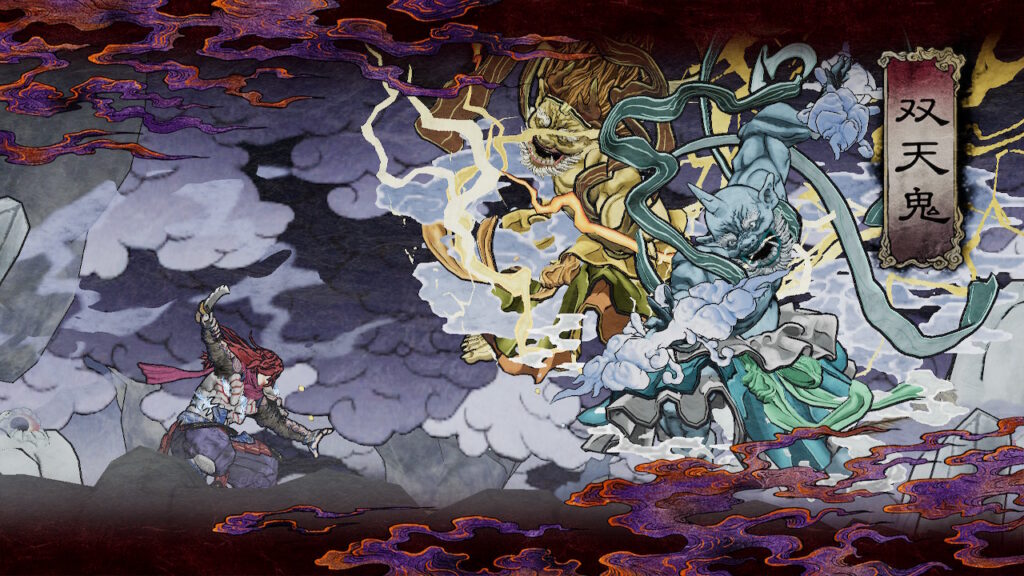
Regardless of the level of craft incorporated into GetsuFuMaden: Undying Moon, this is not a game for everyone. The slow incremental progress required to make it past the initial portions of the game are a guaranteed turnoff for some gamers. The unique and finicky controls take some getting used to and it’s almost imperative to have a Switch Pro controller or other alternative controls to the Joycons. The entirety of GetsuFuMaden is designed for the hardcore gamer with a penchant for Japanese culture and roguelikes and is definitely not targeted at mainstream gamers. But with all that in mind, this is a magical title that will captivate gamers and is almost guaranteed to become a cult classic. There is no question that playing GetsuFuMaden: Undying Moon will pay back what you put into it and the entire experience will be a memorable one. At only $25 for the regular edition and $35 with a digital soundtrack and an exclusive Switch port of the original Famicom game (which you cannot buy separately), GetsuFuMaden: Undying Moon is worth every penny you sink into it and every minute of your time you choose to give it. Let’s hope that Konami also has the foresight to release a physical version too, simply for the purpose of preserving a unique title such as this one.
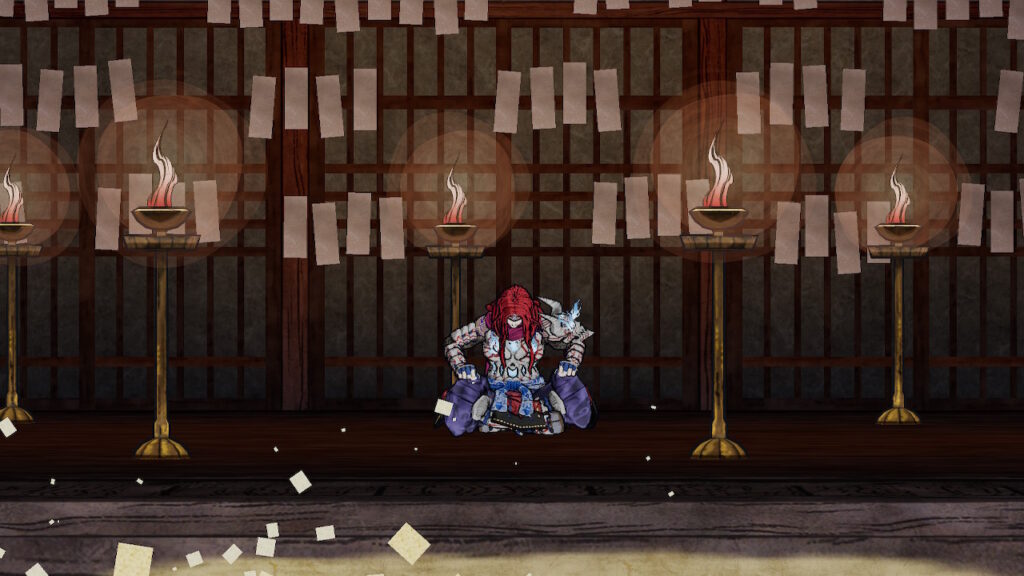
This review was based on a digital copy of GetsuFuMaden: Undying Moon provided by the publisher. It was played on a Nintendo Switch in both docked and undocked modes and played equally well on both, though most time was spent with the game docked. GetsuFuMaden: Undying Moon is also available for PC on Steam.

